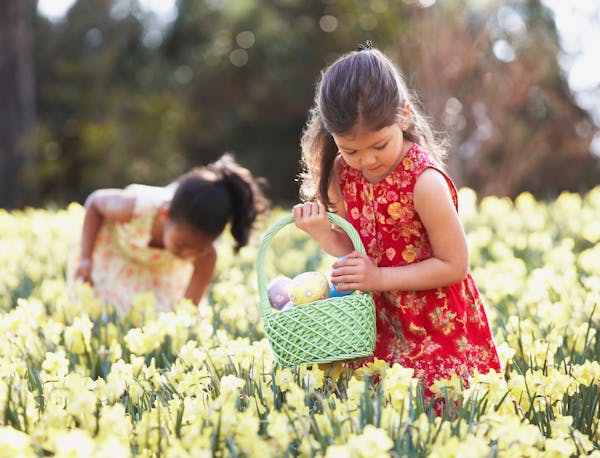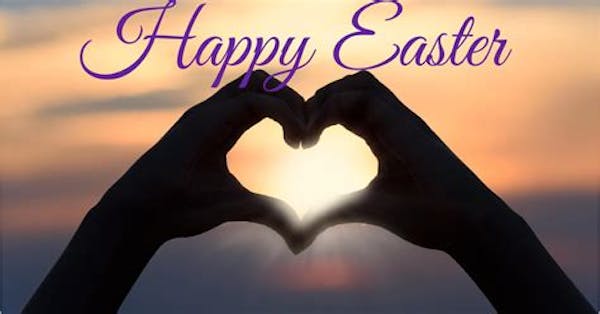Through the Keyhole
April 2024
Take a break from your day...
Not your
typical company OR newsletter
|
|

|
|
"No
they aren't famous for their Hot Dogs here. With about 2
million people living here, they are the 5th largest city in the
region and is called the "City of Music." You can
also ride a ferris wheel where they use train cars as the
vehicle."
Can you guess
the location?
Happy Easter!
Easter is a time of renewal, hope, and joy that transcends cultural
and religious boundaries, bringing people together in celebration of
new beginnings and the promise of brighter days ahead.
At its
core, Easter embodies the beauty of transformation and rebirth,
symbolized by the arrival of spring and the resurrection of Jesus
Christ in Christian tradition. It serves as a reminder of the eternal
cycle of life, where darkness gives way to light, and despair is
replaced by hope.
Easter is
a time for reflection and gratitude, as we pause to appreciate the
blessings in our lives and the gift of love and forgiveness. It's a
season of reconciliation, where differences are set aside, and
compassion prevails, fostering a sense of unity and solidarity among
communities worldwide.
Moreover,
Easter is a celebration of the simple joys of life – from colorful
Easter eggs hidden in gardens to the laughter of children during egg
hunts. It's a time for family gatherings, shared meals, and cherished
traditions that create lasting memories and strengthen bonds.
In a
world often filled with uncertainty and challenges, Easter serves as
a beacon of light, reminding us that even in the darkest of times,
there is always hope. It inspires us to embrace the spirit of
renewal, to let go of past burdens, and to embrace the possibilities
of the future with faith and optimism.
Ultimately,
Easter's message of love, redemption, and resurrection resonates
deeply with people of all backgrounds, offering solace, inspiration,
and a renewed sense of purpose. It's a time to rejoice in the beauty
of life and the boundless possibilities that lie ahead, making it
truly a season to cherish and celebrate.
|
|

|
|

|
|

|
What's in a
Polish Easter Basket?
|
|
A Polish Easter basket, known as "święconka," is a
traditional part of Easter celebrations in Poland. It typically
contains a variety of symbolic foods that are blessed by a priest
during the Easter Sunday Mass. The contents of a Polish Easter basket
may vary depending on regional customs and personal preferences, but
there are several common items that are often included. Here's what
you might find in a typical Polish Easter basket:
1.
Easter Bread (Chleb Wielkanocny): A round loaf of
sweet bread, often decorated with a cross or other religious symbols,
symbolizing the Body of Christ.
2.
Eggs (Jajka): Hard-boiled eggs, often dyed or
decorated with intricate patterns, symbolizing new life and the
Resurrection.
3.
Ham (Szynka): A slice of ham or other cured
meats, symbolizing abundance and the end of Lenten fasting.
4.
Salt (Sól): Representing purification and preservation, salt is
often included in the basket.
5.
Sausage (Kiełbasa): A link of smoked
or fresh sausage, symbolizing God's favor and prosperity.
6.
Horseradish (Chrzan): A symbol of the
bitter herbs eaten at the Passover Seder, horseradish represents the
bitterness of Christ's suffering.
7.
Butter (Masło): Symbolizing the richness of God's
blessings and the goodness of the land.
8.
Cheese (Ser): Often in the form of a white, round
cheese called "Serek Wiejski," symbolizing the moderation
and simplicity of life.
9.
Candle (Świeca): A candle, often decorated or carved
with religious symbols, symbolizing the light of Christ.
10.
Lamb (Baranek): A small figurine or piece of
chocolate shaped like a lamb, symbolizing Jesus as the Lamb of God.
These
items are carefully arranged in a basket, often lined with a white
linen cloth and decorated with fresh greenery or flowers. The blessed
food from the Easter basket is traditionally shared among family
members as part of the Easter breakfast or brunch following the Mass.
|
|

|
|

|
|

|
|

|
Sophos Threat Report 2024
In the
new Sophos 2024 Threat Report, discover the latest cyberthreat trends
affecting small and medium-sized businesses (SMBs)* and get the
insights you need to defend against evolving attacks.
Combining
deep-dive research with the real-world experiences of the Sophos
X-Ops team, the report covers:
Today’s
ransomware landscape, including a look at the tactics employed by the
most prevalent gangs operating today
The
activities of initial access brokers (IABs) and how they advertise
their abilities and services
The value
of ‘data’ as a currency in the cybercriminal underworld
How
attackers are sharpening their social engineering and business email
compromise (BEC) tactics
Following
this report, this webcast explores the latest cyberthreat trends and
provides actionable insights to fortify your defenses against
evolving attacks. Don't miss this opportunity to safeguard your
business against cyber risks.
Read the REPORT HERE
|
Guess the Location Game
Last month the winner of the guess the location game was John Rammersheim who
guessed the right answer. I appreciate all of the
participation. THANKS FOR PLAYING!
|
|

|
|
"This
bustling capital of its country is home to a really cool church, yet
to be completed, a colorful blend of architectural classics, and a
bustling beachfront along the sea. But watch out for pick
pockets and statues that come to life."
Barcelona
is the kind of city that casts a spell over its visitors. Enticed by
the epic architecture and promise of deep-running history set in the
context of a coastal Mediterranean getaway, millions of travelers
arrive every year to see the charms of Barcelona for
themselves.
Despite
this popularity, it’s often misunderstood – especially if you fail to
escape the typical tourist pitfalls. For me, though, it’s a city that
always called me back and a place where I felt the most at home, but
I admit that there are many missteps travelers can make in a city
this big, popular and culturally complicated.
Today,
the spotlight often shines on Barcelona for its overtourism problem,
and local resentment makes itself known through aggressive graffiti
near popular attractions. In some cases, this has even forced city
officials to restrict access to once off-the-grid spots like the
Carmel Bunkers, simply because the crowds have gotten out of control.
In my years of living in Barcelona, I’ve learned how to avoid
shoulder-to-shoulder crowds and enjoy the city as a local would.
Here’s everything you should know before you come to Barcelona, from
the essential safety tips to the cultural landscape.
1. You can’t
see the whole city in a day
Barcelona
may not be the biggest city you’ve ever been to, but it is massive
when you consider all the ways you can entertain yourself. Because
there is so much to see, the ideal number of days for a trip to
Barcelona is between two and five. That should be enough to cover the
must-sees, but if you want to explore more in the surrounding area,
10 days would give you additional time to plan day trips either to
nearby cava wineries, the Costa Brava, or even as far north as the Pyrenees for a day of skiing.
2. There will
be lots of tourists
There’s
no use denying that overtourism is an issue in Barcelona, but you can
plan to avoid the crowds by traveling during the off-season or trying
to get an early start on the day before the cruise ships pull in and
the streets fill up with visitors.
You can
also book many tickets in advance so you don’t have to wait in the
long lines, but in some places, you won’t be able to avoid the
crowds. Try to space out the big attractions in your itinerary so you
have some breathing room in between, ie, don’t go from the Sagrada Familia to Casa Batllò.
3. Avoid
traveling during big events
Barcelona
draws big acts from around the world every summer as a mainstay on
the music festival circuit. But unless you’ve got your ticket
to Primavera Sound or Sonar already, you may
want to avoid traveling during these weekends or any other time when
large trade fairs, like the Mobile World Congress, take over the
city. It’s already an expensive city, but accommodation rates
skyrocket when a big influx of visitors is on its way.
4. Know what cultural events to look
for
If you
want to have an authentic cultural experience in Barcelona, you can
look for local events that embrace Catalan traditions like the
parades of giants, human tower gatherings, Sardana dance circles and the Correfoc fire
parades. You may stumble across them if you’re traveling over a
holiday like Holy Week, but if you want to secure your odds, make a
trip in September when the city celebrates La Mercè, one of
Barcelona’s patron Saints, with a week of festivities that include
cultural events and free concerts.
5. There’s
more than one Rambla
Everyone
will tell you La Rambla is a must-do, but for me, walking
the Rambla feels a lot like walking through Times Square back at home
– crowded, touristy, and to be avoided whenever possible. Thankfully,
the city has more than one Rambla, where you can actually enjoy the
slow strolling these city features were built for. In the center, you
can venture down the Rambla del Raval with its famous Botero cat
sculpture, or go a little bit out of the way to walk the Rambla del Poblenou from Diagonal all the way
down to the beach.
6. The beaches
get better the further away from the city center you get
Barceloneta is the most famous beach in
Barcelona, and the adjacent neighborhood is worth checking out for
its narrow streets and great tapas spots, but travel further down if
you actually want to lay out on the beach. Barceloneta can get very
crowded and noisy with tourists, so walk or cab your way past Port Olímpic to Platja de la Mar Bella. Because all the beaches
in Barcelona are artificial, built for the 1992 Olympic games, the
sand isn’t the nicest, to be frank. If you can travel outside the
city to Sitges or up the Costa Brava, you’ll find more tranquil and scenic
beaches.
7. Get to know Catalan culture
An autonomous region of Spain, the subject of
Catalan independence is still a touch-and-go, but you should be
respectful to the locals by learning about all the distinct
characteristics that give Catalans their cultural identity. Show a
little curiosity, and locals will be more than happy to tell you all
about their favorite traditions, from wintertime onion barbecues to
the cheeky caganer ("the
pooper") a beloved Christmas icon.
8. Catalan is
not a dialect of Spanish
If you’re
looking for the quickest way to offend a Catalan, this is the one.
Almost everyone in Barcelona can speak Catalan and Spanish, and the
tourism circuit is well set up for English-speaking clientele, so you
should have no problem getting around. However, you can make a good
impression on your hosts by learning a few words. Some are similar to
Spanish and French, like “Hola”
and “Merci”
for “Hello” and” Thank you,” but you can also try “Bon día” for “Good
morning” and “Adéu”
for “Goodbye.”
9. Pickpockets
are a real issue
Just
about everyone in Barcelona has a first or second-hand pickpocketing
story, including me (they slipped two credit cards out of my wallet
while I was working on my laptop in a crowded cafe). You should never
let your guard down, especially when riding the metro or walking down
crowded tourist areas like La Rambla. Keep your phone put away
whenever you’re not using it, and never leave it sitting out on the
table if you’re dining outside.
10. Public transportation is safe and
efficient
Although
you do have to mind your belongings for the nefarious pickpockets,
one of the best things about living in Barcelona is how easy and
efficient public transportation is. I’ve had generally positive
experiences, and it’s easy to connect to the major train and bus
stations for adventures outside the city.
You may
also see the red shared bikes called Bicing, but don’t bother trying
to rent one because they’re only for residents. If you want to take
advantage of Barcelona’s bike lanes, you’ll have to get a rental from
a shop, but be strategic about how and where you lock it – bike
thieves are as common as pickpockets.
|
|

|
|

|
|

|
|

|
|

|
|

|
|

|
|

|
|

|
|
Swanky Nightlife... ~1 minute
|
Is that Chicken or Ice Cream?
|
|
A Classic - Got any Grapes? ~ 3
minutes
|
A Story From Pearl Harbor...
|
|

|
|
Sunday,
December 7th, 1941--Admiral Chester Nimitz was attending a concert in
Washington, DC.
He
was paged and told there was a phone call for him. When he answered
the phone, it was President Franklin Delano Roosevelt on the phone.
He told Admiral Nimitz that he (Nimitz) would now be the Commander of
the Pacific Fleet. Admiral Nimitz flew to Hawaii to assume
command of the Pacific Fleet. He landed at Pearl Harbor on Christmas
Eve, 1941.
There
was such a spirit of despair, dejection and defeat--you would have
thought the Japanese had already won the war. On Christmas Day,
1941, Adm. Nimitz was given a boat tour of the destruction wrought on
Pearl Harbor by the Japanese. Big sunken battleships and navy vessels
cluttered the waters everywhere you looked. As the tour boat returned to
dock, the young helmsman of the boat asked, "Well Admiral, what
do you think after seeing all this destruction?"
Admiral
Nimitz's reply shocked everyone within the sound of his
voice. Admiral Nimitz said, "The Japanese made three of the
biggest mistakes an attack force could ever make, or God was taking
care of America . Which do you think it was?" Shocked
and surprised, the young helmsman asked, "What do mean by saying
the Japanese made the three biggest mistakes an attack force ever
made?"
Nimitz
explained:
Mistake
number one:
The
Japanese attacked on Sunday morning. Nine out of every ten crewmen of
those ships were ashore on leave.
If those same
ships had been lured to sea and been sunk--we would have lost 38,000
men instead of 3,800.
Mistake
number two:
When
the Japanese saw all those battleships lined in a row, they got so
carried away sinking those battleships, they never once bombed our
dry docks opposite those ships. If they had destroyed our dry docks,
we would have had to tow every one of those ships to America to be
repaired. As it is now, the ships are in shallow water and can be
raised. One tug can pull them over to the dry docks, and we can have
them repaired and at sea by the time we could have towed them to
America. And I already have crews ashore anxious to man those ships.
Mistake
number three:
Every
drop of fuel in the Pacific theater of war is in top of the ground
storage tanks five miles away over that hill. One attack plane could
have strafed those tanks and destroyed our fuel supply. That's why I
say the Japanese made three of the biggest mistakes an attack force
could make or God was taking care of America.
I've
never forgotten what I read in that little book. It is still an
inspiration as I reflect upon it. In jest, I might suggest that
because Admiral Nimitz was a Texan, born and raised in Fredericksburg
, Texas -- he was a born optimist. But any way you look at
it--Admiral Nimitz was able to see a silver lining in a situation and
circumstance where everyone else saw only despair and defeatism.
President
Roosevelt had chosen the right man for the right job. We desperately
needed a leader that could see silver linings in the midst of the
clouds of dejection, despair and defeat.
|
Greatest Wheelchair EVER?
|
|
~16 minutes - GREAT STORY
|
Lamb Casserole Slow Cooker Recipe
|
|
o
Lamb shoulder
o
Sea salt and freshly
ground black pepper
o
Garlic, Thyme, Bay Leaves
o
Onions
o
Carrots
o
Lamb stock
(chicken or beef works too)
o
Mint jelly
o
Soy sauce
Put the
garlic, onions, carrots, lamb joint and stock into a slow cooker, then season. Cook on HIGH for 10 hours or LOW for 12 hours When cooked, put the meat in a tin, smother it with mint jelly and
bake in the oven for 20-30 minutes on 450F. Remove the carrots and onions and set aside.
|
|
All rights reserved.
Our mailing
address is:
210 S. Milwaukee Ave. Wheeling, IL 60090 USA
|
|
|
|
|
No comments:
Post a Comment